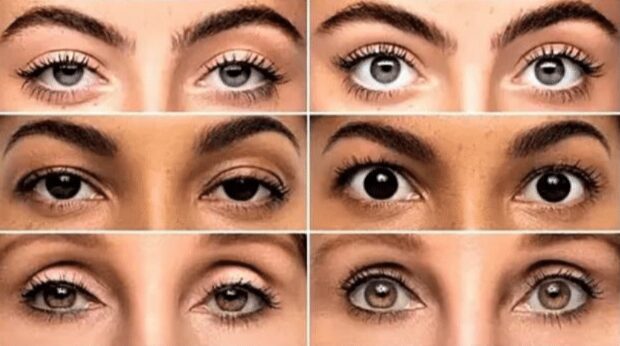TIRED, DROOPY EYELIDS – NOW THERE’S A NON - SURGICAL OPTION!
Meet Upneeq!

Makeup
What We Offer and Why

Eyes Are The Story

Twenty/Twenty

We Love Eyes

The Naughty List
- Parabens – preservatives linked to breast cancer and hormone disruption
- Sulfates: SLS (Sodium Lauryl Sulfate) &SLES (Sodium Laureth Sulfate) – surfactants used in cleansers to create later, can irritate the eyes and skin.
- Phthalates - Makes cosmetics more flexible and less brittle, linked to reproductive problems and birth defects in animal studies.
- Mineral Oil – can clog pores and lead to dehydration and flaking
- Formaldehydes & formaldehyde releasing agents – preservatives known to be carcinogenic and cause skin irritation and allergies.
- Retinyl almitate – similar to Retinol, breaks down when exposed to UV, creating free radicals which can damage the skin.
- Fragrance – can cause skin irritation and allergies
- Oxybenzone – a sunscreen ingredient, is a known hormone disruptor, skin irritant, and is toxic to coral reefs and marine life.
- Coal Tar – contains polycyclic aromatic hydrocarbons which are known carcinogens.
- Hydroquinone – is a known carcinogen and skin irritant that can cause blue-black discoloration of the skin.
- Toluene – A solvent commonly used in nail polish and hair dyes, linked to developmental and reproductive toxicity and respiratory problems
- Triclosan – can contribute to hormone disruption, antibiotic resistance, and is harmful to aquatic life.
- Triclocarban – same as Triclosan.
- Ethyl acrylate – can cause skin irritation or allergies.
- Ethyl methacrylate – same.
- Methyl methacrylate – strong sensitizer for irritation and allergies.
- Butyl methacrylate – damaging to lungs if inhaled.
- Hydroxypropyl methacrylate – skin and respiratory sensitizer, damages lungs if inhaled.
- Tetrahydrofurfuryl methacrylate – same.
- Trimethylolpropane – eye, skin, respiratory irritant.
- Trimethylmethacrylate – can cause allergic reactions.
- Aluminum Salts – thought to cause breast cancer, Alzheimer’s disease and kidney problems.
- Animal Oils/Musks/Fats – ethical and environmental concerns.
- Benzophenone Related Compounds – endocrine disruptor.
- Butoxyethanol – liver and kidney damage, reproductive toxicity.
- Carbon Black–lung problems.
- Lead – a toxic heavy metal sometimes found as a contaminant.
- Lead Acetate – darkens grey air, but is neurotoxic.
- Methyl Cellosolve – respiratory and reproductive toxicity.
- Methoxyethanol – reproductive and developmental toxicity.
- Methylchloroisothiazolinone – skin and allergy reactions.
- Mercury Compounds – neurotoxic.
- Thimerisol – a mercury compound.
- Resorcinol – a hair dying agent, toxic when absorbed through the skin.
- Talc – may contain asbestos, linked to ovarian cancer.
- Toluene – damages nervous system, liver, and kidneys.
- BHA (butylated hydroxyanisole) – potential carcinogen.
- BHT (butylated hydroxytoluene) threshold 0.1% - allergen.
- DEA (diethanolamine) – skin and eye irritant, potential carcinogen.
- TEA (triethanolamine) – skin and eye irritant, potential carcinogen.
- MEA (monoethanolamine) - skin and eye irritant, potential carcinogen.
- ETA (Ethanolamine) - skin and eye irritant, potential carcinogen.
- Nanoparticles - studies have suggested that certain types of nanoparticles may be able to penetrate the skin and enter the bloodstream.
- Petrolatum - studies have suggested that petrolatum may be contaminated with potentially harmful impurities, such as polycyclic aromatic hydrocarbons (PAHs), which are known carcinogens.
- Paraffin - long-term exposure to paraffin fumes may be harmful to the respiratory system and may increase the risk of lung cancer.
- Polyacrylamide - potential to be contaminated with acrylamide, which is a known carcinogen.
- Acrylamide – known carcinogen.
- Bromostyrene – limited safety information.
- Deastyrene – limited safety information.
- Styrene oxide – limited safety information.
- Loose Mica – mined using child labor.
- Loose powders and pigments – inhalation risk. In addition, some manufacturers use untested powders and pigments.
- Loose Glitter – risk of eye irritation or injury.
- Benzalkonium chloride (BAK) – skin irritations and allergic reaction.
- Exfoliants – patch test before use.
- Bimatoprost – may cause redness, itching and darkening of skin.
- Argireline – evidence is mixed supporting its use.
- Prostoglandins – red eyes, loss of orbital fat producing sunken look, skin darkening.
- Dimethicone – skin irritation or allergic reaction.
- PEGs (polyethyline glycols) – generally safe except occasional skin irritation.
- PPGs (polypropylene glycols) – generally safe except occasional skin irritation.
- Glycols – skin irritation and allergic reactions
- Alcohols - individuals with sensitive skin may want to avoid products that contain high concentrations of alcohol or opt for alcohol-free alternatives
- Propylene carbonateamino methyl propanol
- Glycerin at high concentrations
- Alcohols
- Propylene carbonateamino methyl propanol
